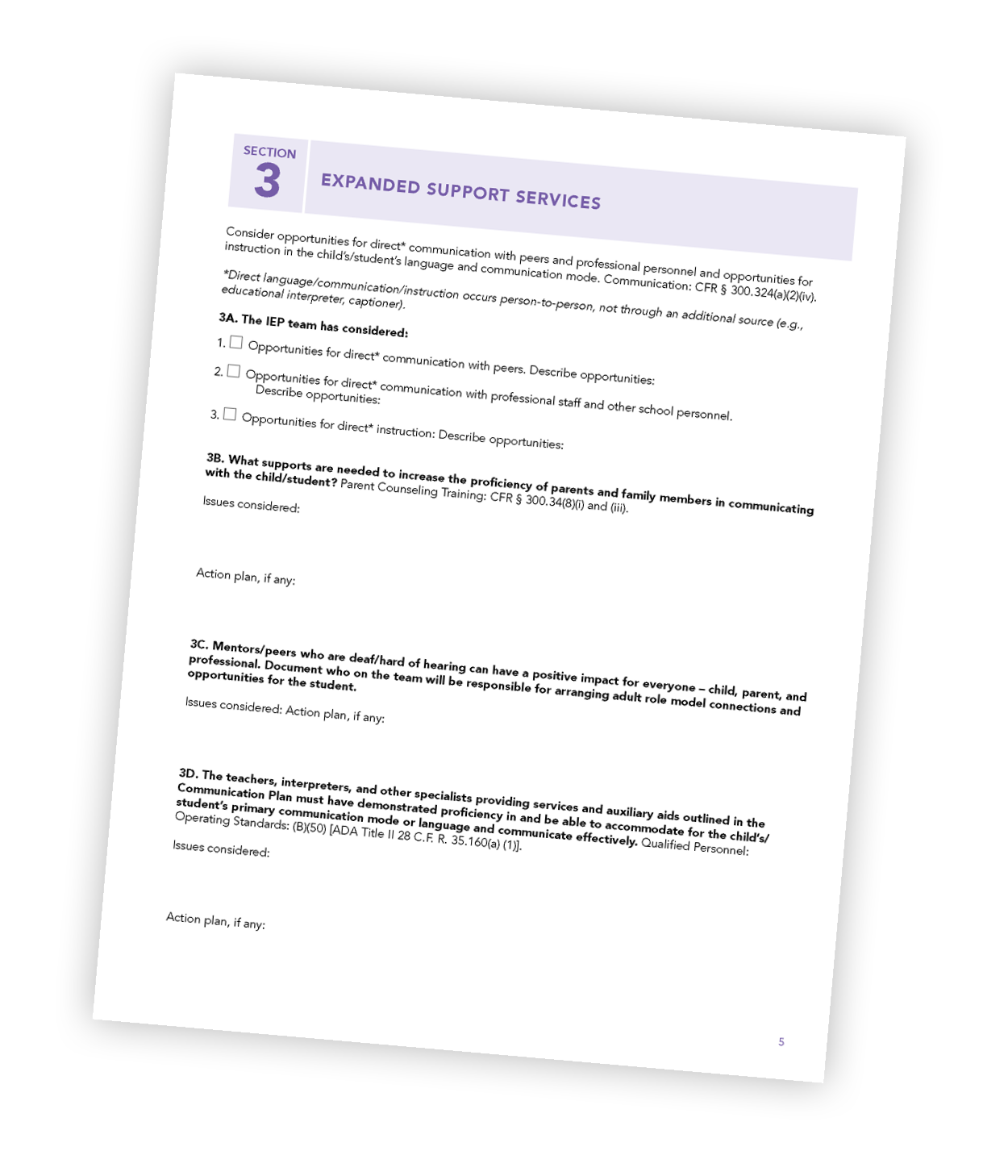Communication Planning Guide for Students Who Are Deaf or Hard of Hearing
Expanded Support Services
Video: Outreach - 07_Tabitha
This video is being reviewed for audio description.
What is Audio Description?
When Audio Description (AD) is enabled, descriptive language narrates what is on the screen. To learn more, visit our accessibility webpage.
Video Player Help
Kaltura Video Hosting: This website uses Kaltura, a video hosting company, to serve video content. If you are having difficulty viewing videos on this site, it may mean that your location (e.g., school district, organization) is blocking or filtering the Kaltura website. Please contact your IT personnel to resolve this issue.
Accessibility: We strive to make this website accessible for all users, including people with disabilities. To learn more visit our accessibility webpage.
Captions / Transcript
After hitting play you can access an interactive transcript for this video by selecting the Show Transcript icon![]() in the top right corner of the video when you select play.
in the top right corner of the video when you select play.
You can turn on captions by selecting the Enable Captions icon![]() in the bottom right corner. Captions can also be turned on by selecting the Settings icon
in the bottom right corner. Captions can also be turned on by selecting the Settings icon![]() , where you can also set your caption preferences.
, where you can also set your caption preferences.
When available, you can use Spanish subtitles for this video by selecting Settings![]() and choosing Spanish in the Captions drop down menu.
and choosing Spanish in the Captions drop down menu.
Section 3
The purpose of this section is to consider what is necessary to establish opportunities for direct communication. This communication is natural, and doesn’t occur through an additional source, such as an interpreter. Its communication opportunities that allow the student to naturally develop his/her own communication skills, cognitive skills, self-advocacy skills, and emotional intelligence.
Opportunities for direct communication with peers, teachers, and community members are important because they encourage the student to develop skills needed for successful post-secondary planning, career preparation, and independent living. Consider opportunities for direct communication with peers and professional personnel and opportunities for instruction in the child’s language and communication mode to support their social and emotional development. What opportunities does the student have to engage in direct communication with peers and professional personnel in the child’s language and communication mode, at his or her academic level, and considering his or her full range of needs, including opportunities for direct instruction in the child’s language and communication mode?
As teams plan for direct communication opportunities, ensuring access and engagement for a student across a school day, consider:
Sample Discussion Questions
- What opportunities exist for the student to communicate directly with peers using his or her preferred language and communication mode?
- Do nondisabled peers have opportunities to learn sign language if the student uses sign language?
- Do typical peers understand the communication needs of the deaf or hard of hearing student in order to allow for direct communication among peers?
- Can the student communicate in his or her native language with teachers?
- Can the student communicate directly with school staff?
